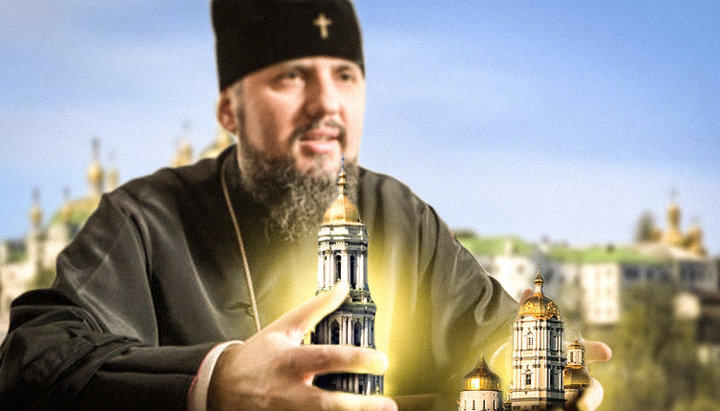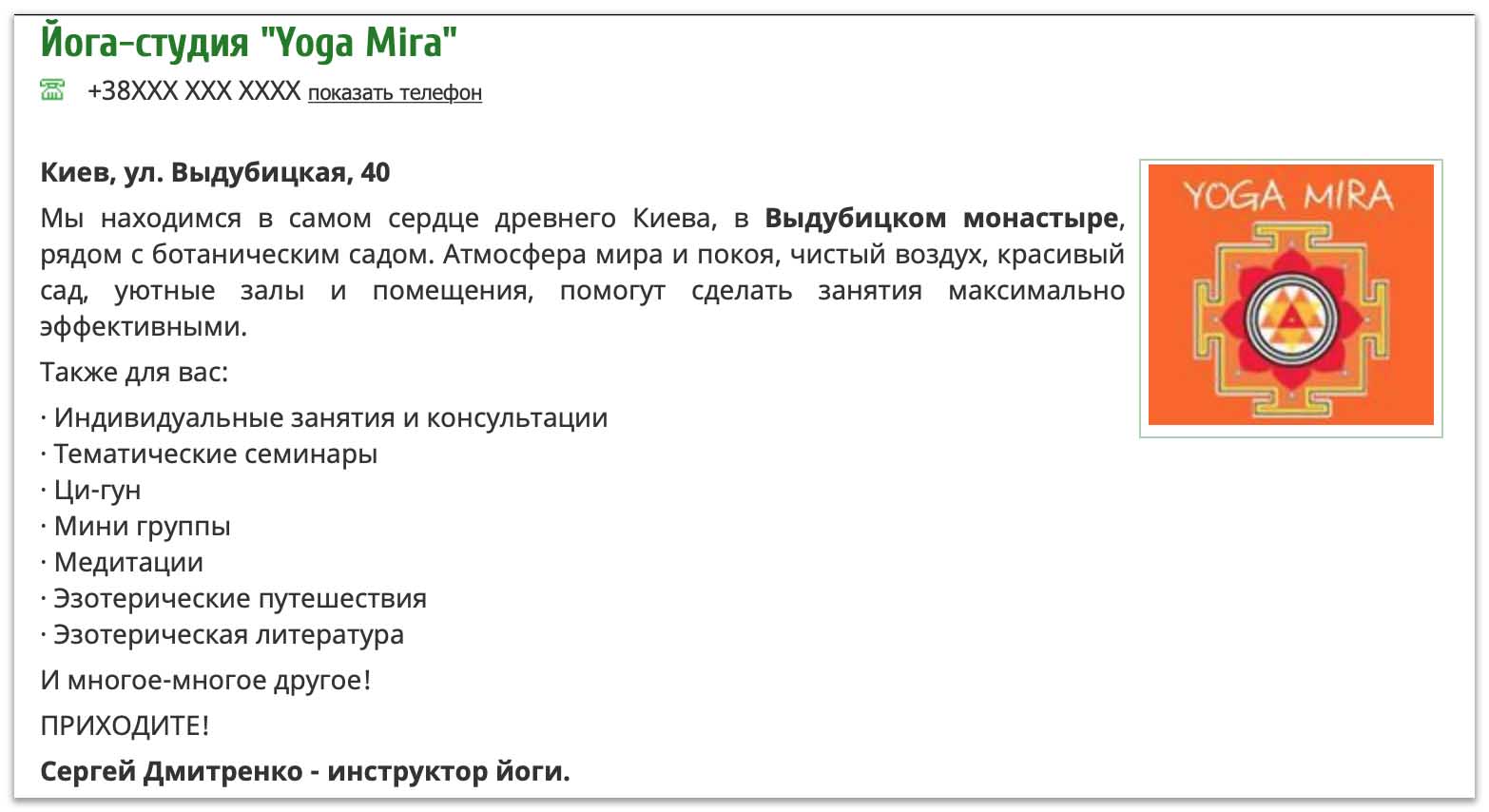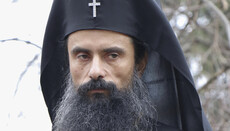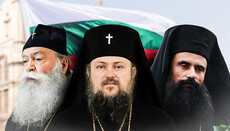What will happen to Kyiv and Pochaiv Lavras if they are seized by OCU?

Epiphany Dumenko said that the Kyiv and Pochaiv Lavras should be the OCU’s. Who is he going to serve in the Lavras, if there are almost no "monks" in his own structure?
On December 24, 2020, the head of the OCU, Epiphany Dumenko, said that his structure would seek to transfer the Pochaiv and Kyiv Pechersk Lavras to its disposal.
According to the head of the OCU, "it depends on the state: to transfer them to the Orthodox Church of Ukraine or not to transfer them." At the same time, Dumenko assures that the OCU does not aim "to incite hostility and confrontation on religious grounds," but "pursues only justice and peace."
First, to hear from a person whose religious structure has taken away more than 120 temples of the canonical Church with the help of physical violence, the words that he does not want enmity is not only strange, but also absurd. This is the same as to hear from a wolf that he does not want to be at enmity with the lamb, but only eat it.
Secondly, making such statements, Dumenko understands perfectly well that they will not lead to anything good. Attempts to take away the monasteries from the canonical Church will unambiguously provoke exactly the very “incitement of hostility and confrontation on religious grounds” that the OCU allegedly wants to avoid. Moreover, even words about this are nothing more than a provocation aimed at inciting inter-religious confrontation.
Thirdly, this is not the first time and it is not only he who has spoken about it. Several years ago, the head of the UOC-KP Filaret Denisenko said about similar intentions. In addition, these ideas are voiced with surprising persistence by right-wing radicals and various “patriots”, while in the 90s and in 2014 there were even attempts to implement them.
On the other hand, Sergei Petrovich Dumenko, talking about the "peaceful" seizure of the Pochaiv and Kyiv-Pechersk Lavras, is silent about one very important aspect – who will inhabit these two huge monasteries if they "peacefully" get to the OCU? In other words, does the Dumenko-led structure have enough human resources for the monasteries to remain monasteries, rather than to be turned into something unknown? Let's try to answer these two questions.
How many “monks” are there in the OCU?
On December 15, 2020, Sergei (Epiphany) Dumenko, speaking at the “bishop’s council” of the OCU, said that its structure is the largest religious organization in Ukraine. We analyzed in detail all the lies of this statement in one of the articles, and just a few days ago the Ministry of Culture confirmed that we are right while Dumenko is telling lies.
According to the data of the Ministry of Culture of Ukraine, published in response to a request from the journalists Radio Svoboda, the UOC has almost twice as many parishes as the OCU. And if Dumenko named only an approximate number of communities in his structure, the Ministry of Culture voiced quite specific figures.
At the same time, in his report for 2020, speaking about the approximate numbers of parishes, priests and monasteries (!), the head of the OCU hushes up the number of monastics in his religious organization. And this is not the first time he has done so – in 2019, he likewise did not say a word about how many monks there were in the OCU in 2019. Why?
The fact is that the monks of the OCU, in contrast to the "parishes", are much easier to count.
Indeed, by and large, a parish can be registered on paper (for this you need to collect 10 signatures), but in reality it may not exist. But with "monks" it is more difficult to do the same, especially when there are several dozen of them. And while Epiphany is silent about his "monks", the Ministry of Culture can deliver specific figures.
At the beginning of 2019, i.e. at the time of the unification of the UAOC and the UOC-KP into the OCU, the Ministry of Culture of Ukraine published data on the number of "monastics" in both of these structures.
There were 63 "monasteries" in the UOC-KP at that time. They numbered 230 "monks" – on average, 3.65 "monks" per "monastery". However, as noted in the network, it is impossible to average the number of "brethren" of schismatic "monasteries", because no one lived in some of them.
At the beginning of 2019, there were 63 "monasteries" in the UOC-KP, with 230 "monks" in them – on average, 3.65 "monks" per "monastery". The UAOC has 18 "monks" per 14 "monasteries" throughout the country – on average, 1.28 "monks" per "monastery".
For example, in the Chernivtsi region there were 3 "monks per for 4 "monasteries" of the UOC-KP, in the Ternopil region – 5 “monks” for 6 “monasteries”. And this small wonder. Because if we consider that most of the "brethren" lived in the Kyiv St. Michael's Golden-Domed and Vydubytsky monasteries, then only a few will be available in the regions.
The UAOC showed similar pattern. For example, by 2019 this entire structure had only 18 "monks" in 14 "monasteries" throughout the country – on average, 1.28 "monks" per "monastery". At the same time, as in the case of the UOC-KP, in some “monasteries” there were no “monastics” at all. For example, in the Ternopil region there are 5 “monasteries” with 5 “monks”, and in Vinnitsa – 1 “monastery” with 0 “monks”.
In total, at the time of the merger of the UOC-KP and the UAOC in the OCU, there had to be 81 monasteries in the new structure (Dumenko said “about 80”) and 248 “monks” (Dumenko kept silent about this). The average population of the OCU “cloisters” is 3.1 “monks”. In addition, we must take into account that a part of Dumenko's clergy is slowly migrating back to Filaret, therefore the given figure of 248 "monks" may even turn out to be overestimated.
At the same time, even if we do not count the recent tonsures into monasticism, which were performed in the period from December 15, 2020 to January 4, 2021 (as of this writing), the canonical Ukrainian Orthodox Church numbers 255 monasteries with 4,548 monastics.
Hence one can understand the silence about the "monks" in Epiphany's reports – to voice the figure of 248 "monks" of the OCU against the backdrop of 4548 with the UOC is somehow shameful, isn’t it?
The average population of the OCU “cloisters” is 3.1 “monks”.
What’s going on in the OCU’s “cloisters”?
The most interesting thing is that Epiphany is not embarrassed to say that it is necessary to seize the Kyiv-Pechersk and Pochaiv Lavras from the UOC, in which there are many times more monks than in the entire OCU combined. It is clear that the Dumenko’s organization simply will not be able to fill in these two huge monasteries with "monks". What will happen to the shrines, if in the end they are "peacefully" transferred to the OCU?
In order to answer this question, let's take a look at three examples showing what is happening in some of the "monasteries" of Dumenko-led structure.
Example # 1: St. Theodosius Monastery.
What "spiritual life" in the monasteries of the OCU looks like can best be understood by the example of the Theodosius Monastery, located right across the street from the Kyiv-Pechersk Lavra.
This monastery was taken over by the UOC-KP in 1992. Before the restoration of the St. Michael's Golden-Domed Monastery, the governing bodies of the UOC-KP were located here. After the “unification council” on December 15, 2018, the monastery became part of the OCU, and since June 20, 2019, it has been directly subordinate to Epiphany Dumenko. That is, the Theodosius Monastery is far from being a rear and provincial monastery. What is happening outside the walls of this monastery? The believers of the OCU themselves write about this. They have the floor.
“The young and ambitious Archimandrite Makariy, who was tonsured at the St. Michael Monastery, became the governor of the Theodosius Monastery in 2013. Since then, he has embarked on a course to establish his own personal, unlimited power in the monastery and turned it, in fact, into his own parish, from which he feeds himself "and his whole household". In the hotel building of the monastery, where there are at least 30 rooms that could receive pilgrims from all over the world, there are systematically "no vacant places". Instead, a large number of unknown civilians and families with small children live there, whom local monks identify as fellow villagers of the governor Makariy from Lukov village, Lviv region. There are many more of them than monastics.
The brethren are not present at services, the morning prayer is performed by one reader and one serving priest, and there is no evening prayer at all. The monastery is currently home to only six monks, two of whom are elderly and do not even serve once a week.
Believers of the OCU about the Theodosius Monastery of the OCU
The brethren are not present at services, the morning prayer is performed by one reader and one serving priest, and there is no evening prayer at all. The monastery is currently home to only six monks, two of whom are elderly and do not even serve once a week. The sequence (daily “worship” – Ed.) is conducted by six lay priests and deacons together with two hieromonks. Also, there are no common meals in the monastery, where all the brethren, headed by the governor, would be present and the lives of the saints or psalms would be read. The head of the monastery eats separately in his three-room cell with relatives and friends.
The brethren are also not provided with spiritual guidance. There is no confessor in the monastery, so there are no regular confessions and conversations ...
The last monastic tonsure took place here 5 years ago. New novices do not come, with the exception of seminarians from the Kyiv Theological Academy for singing and reading, but none of them wants to stay long. Consequently, there is no education of the new generation in the spirit of prayer and labor. All household chores are provided by hired workers, including women, who cannot be in the cell building at all.
Presumably, the monastery does not experience a lack of money – there is a building on its territory that is constantly rented by various political parties, and for this they must pay considerable sums. From time to time, empty rooms, not occupied by monks, pilgrims and relatives of the governor, are rented out for offices. Some sponsors paid for the restoration of the high bell tower, which was once blown up by the Bolsheviks. But for whom are its bells ringing?"
One should agree that the picture of the spiritual decline of one of the central monasteries of the OCU is not only disappointing, but also quite revealing. At the same time, the parishioners of the Theodosius Monastery themselves cite the Kyiv-Pechersk Lavra as an example of how a proper monastic life should look. The Lavra, according to them, is a real monastery, in sharp contrast to the OCU’s.
That is why, say the believers of the OCU, "most people pass the Theodosius Monastery, quickly heading to the Lavra – to the caves, to the shrines and elders known throughout Ukraine."
Example number 2: Vydubytsky Monastery.
Another Kyiv monastery belonging to the OCU is called Vydubytsky. It was founded in the 11th century. In 1990, divine services were resumed at the monastery. Two years later, the believers of the canonical Ukrainian Orthodox Church were expelled from the monastery, which was taken over by the UOC-KP. Most of the believers (for example, the entire choir, together with the choir director Dmitry Bolgarsky) remained loyal to the UOC and moved to the St. Iona Monastery or the Kyiv-Pechersk Lavra. Since 1997, the UOC-KP has resumed "monastic life" in the Vydubytsky monastery. In 2008, Epiphany Dumenko became its abbot. He held this position until 2018 – when he was elected the head of the OCU. What happened and is happening outside the walls of the Vydubytsky monastery?
The situation with monasticism in the Orthodox Church of Ukraine, to put it mildly, is disappointing – in the whole of Ukraine there are only a few monasteries with several monks in each, and they often came there simply out of despair, because of a difficult situation in life, after a divorce, or with bishop's ambitions. That is, there are very few of those who, from their youth, chose the angelic image as their vocation.
Parishioners of the OCU about "monasticism" in the OCU
Back in 2015 (when the monastery was led by Dumenko), publications began to appear on the network, according to which organizations, rather strange for Orthodoxy, were operating on the territory of the Vydubytsky monastery. One of them is "Yoga of the World".
We go to the website of this organization and see that its registration has not changed: “Yoga of the World. We are located in the very heart of ancient Kyiv, in the Vydubytsky monastery, next to the botanical garden." What, besides yoga classes in "cozy rooms", does the leadership of this organization offer? We read: "Qigong, meditation, esoteric travel, esoteric literature and much, much more!"

It is difficult to picture what is meant by "much, much more" after "esoteric travel". But it certainly has nothing to do with monasticism and monastic life.
Example # 3: Monastery in honor of the apostles Peter and Paul.
In 2019, it became known that the Ternopil diocese of the OCU was implicated in a scandal related to the sale of the Chervonogorod castle and monastery in honor of the holy supreme apostles Peter and Paul. The monastery itself, although it belongs to the OCU (and before that – to the UAOC), was empty. Perhaps for these reasons, or perhaps for another reason, the leadership of the Ternopil diocese of the UAOC decided to sell it, while the new leadership of the Ternopil diocese in the person of the OCU did not want to change the situation.
According to the head of the "Fund for the memory of Metropolitan Methodius" (Kudryakov, the former head of the UAOC – Ed.) Natalia Shevchuk, when selling this property, "a little less than half a million hryvnias" was raised. However, "not a penny was credited to the diocese's account."
The "hierarchs" sold the church property according to a simple scheme. The "diocese" entered a limited liability company with property, while businessmen – with money. After that, the "diocese" withdrew from the founders of the society now without the castle and the monastery.
At the moment, the case of the sale of real estate is being handled by the State Bureau of Investigation, where criminal proceedings were registered in early December.
“Archbishop” Mstislav Guk, who was involved in the sale of the monastery, was replaced by “Vladyka” Tikhon Petranok, who said that the “diocese” was cash-strapped. “I came to the diocese, but it was penniless."
Ultimately, the Ternopil "diocese" of the OCU, which lost property in the transaction, refused to recognize itself as an injured party.
Conclusions
It is known that the presence or absence of monks is an indicator of the spiritual life of the Church. After all, firstly, it is thanks to monastic prayer that our world, mired in sins, continues to exist. Second, monks set an example for the spiritual life of the laity. Third, it is the representatives of monasticism who become bishops. And fourthly, if there are no (or very few people) in the Church who are ready to completely devote their lives to God in the angelic rank, then this speaks not so much of the crisis of monastic vocation as of the crisis of such a church.
In this sense, the OCU with 240 monks is a spiritual pit. The number of "monks" there is so scarce that its leader is even ashamed to mention it. At the same time, he declares that he is ready to take away the Kyiv-Pechersk and Pochaiv Lavra from the Ukrainian Orthodox Church. What will happen in this case with the two largest monasteries of our Church can be guessed from above examples of those monasteries that now belong to the OCU. They cannot offer either monastic life or spiritual guidance. Renting out for offices of political parties or esoteric and alien to Christianity organizations is their only way of being today. If these abodes cannot be used for long-term profit, they can simply be sold.
All the wretchedness of "monastic life" in Dumenko-led structure is understood not only by us, but also by the supporters of the OCU. The same parishioners of the Theodosius Monastery note, “The situation with monasticism in the Orthodox Church of Ukraine, to put it mildly, is disappointing – in the whole of Ukraine there are only a few monasteries with several monks in each, and they often came there simply out of despair, because of a difficult situation in life, after a divorce, or with bishop's ambitions. That is, there are very few of those who, from their youth, chose the angelic image as their vocation."
And indeed it is. Because there can be no “angelic image” for a “church” that is built not on Christ and Love but on political servility and violence.





